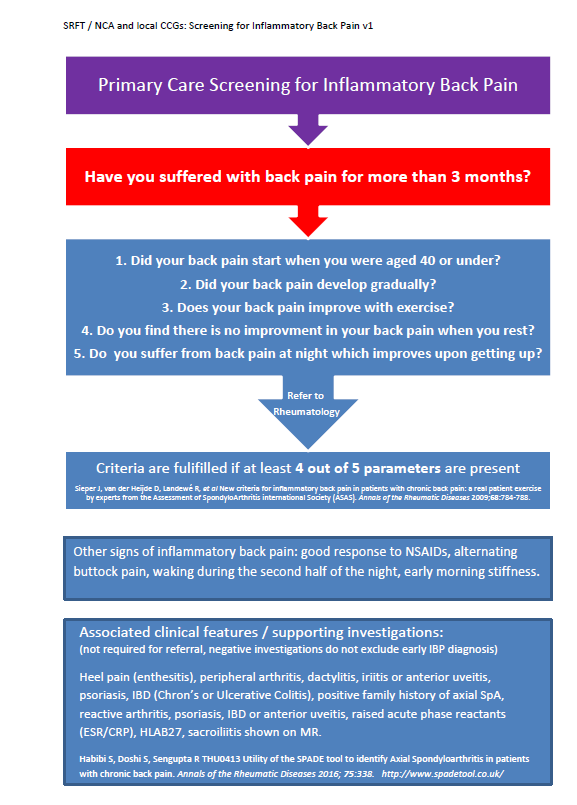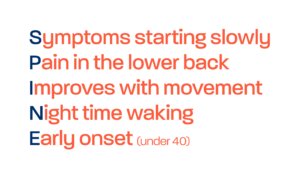
See Salford IBP here
Quality Improvement in the Axial SpA Service at Salford Royal
A Salford-wide IBP Pathway
Background: Diagnostic delay is an ongoing challenge in Axial SpA. Reasons for this delay are multi-factorial and not all may be resolvable, however aiming to reduce this delay to diagnosis is crucial as any delay can leave those awaiting diagnosis prone to experiencing significant amounts of pain and functional limitation. The Covid-pandemic has impacted our ability to follow up and support our axial SpA patients. We are keen to ensure holistic care, supported selfmanagement, timely follow up and optimal disease control as we reconfigure how our axial SpA service runs post-pandemic.
Objectives:
- To increase FCP, GP and public awareness; improving early detection and including IBP pathway.
- To ensure axial SpA represented in pathway for rapid diagnosis, including screening and access to relevant diagnostic investigations.
Methods: To support objective two and feed into objective one we have completed a survey of patients attending our axial SpA clinic about their delay to diagnosis.
Results: Our survey data has demonstrated Salford to deliver a substantially lower delay to diagnosis when compared to published national averages. Our delay from initial appointment in Rheumatology to formal diagnosis validates our use of “EIA” slots for new patients with axial SpA queries.
Conclusion: Overall our cohorts delay to diagnosis from is somewhat lower than previously published results, this may be due to the more recently diagnosed cohort tending to experience a shorter delay, with our data for those diagnosed in the 2016-2021 timeframe being significantly shorter in delay to diagnosis. This is a promising sign for the improvements in axial SpA diagnostic pathways in the past few years, but with this small sample size definitive conclusions cannot be accepted, and instead, the overall pattern of no change in delay to diagnosis will be further explored.



